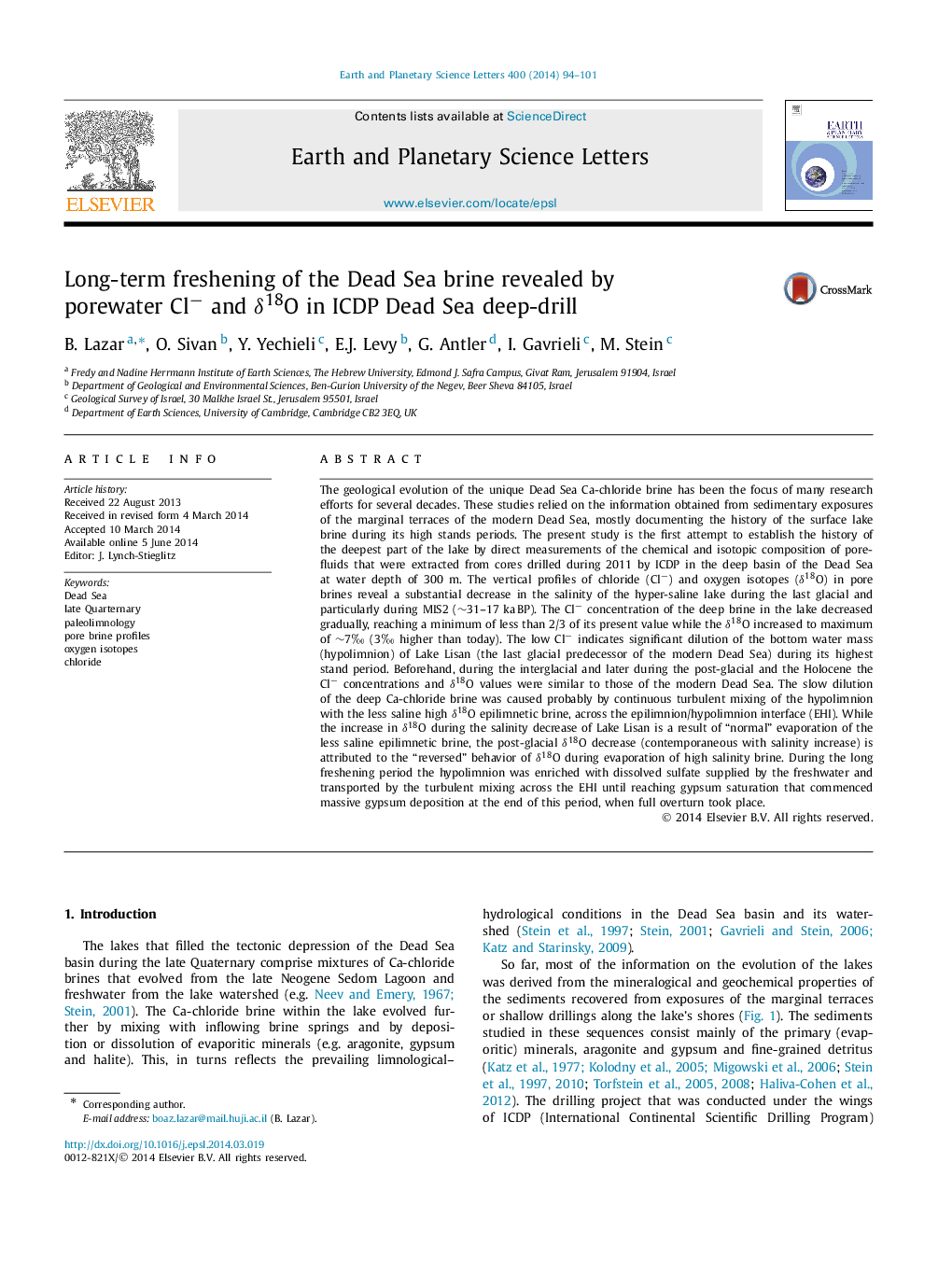| کد مقاله | کد نشریه | سال انتشار | مقاله انگلیسی | نسخه تمام متن |
|---|---|---|---|---|
| 6428755 | 1634756 | 2014 | 8 صفحه PDF | دانلود رایگان |

- First attempt to establish the limnological history of the deepest Dead Sea brine.
- Clâ and δO18 were measured in pore-fluids extracted from Dead Sea ICDP deep cores.
- Gradual decrease in Clâ reflects brine freshening at 31-17 kaâBP.
- Brine-freshening reflects continuous turbulent mixing across the hypolimnion.
- Gypsum saturation led to massive gypsum deposition at the end of this period.
The geological evolution of the unique Dead Sea Ca-chloride brine has been the focus of many research efforts for several decades. These studies relied on the information obtained from sedimentary exposures of the marginal terraces of the modern Dead Sea, mostly documenting the history of the surface lake brine during its high stands periods. The present study is the first attempt to establish the history of the deepest part of the lake by direct measurements of the chemical and isotopic composition of pore-fluids that were extracted from cores drilled during 2011 by ICDP in the deep basin of the Dead Sea at water depth of 300 m. The vertical profiles of chloride (Clâ) and oxygen isotopes (δO18) in pore brines reveal a substantial decrease in the salinity of the hyper-saline lake during the last glacial and particularly during MIS2 (â¼31-17 kaBP). The Clâ concentration of the deep brine in the lake decreased gradually, reaching a minimum of less than 2/3 of its present value while the δO18 increased to maximum of â¼7â° (3â° higher than today). The low Clâ indicates significant dilution of the bottom water mass (hypolimnion) of Lake Lisan (the last glacial predecessor of the modern Dead Sea) during its highest stand period. Beforehand, during the interglacial and later during the post-glacial and the Holocene the Clâ concentrations and δO18 values were similar to those of the modern Dead Sea. The slow dilution of the deep Ca-chloride brine was caused probably by continuous turbulent mixing of the hypolimnion with the less saline high δO18 epilimnetic brine, across the epilimnion/hypolimnion interface (EHI). While the increase in δO18 during the salinity decrease of Lake Lisan is a result of “normal” evaporation of the less saline epilimnetic brine, the post-glacial δO18 decrease (contemporaneous with salinity increase) is attributed to the “reversed” behavior of δO18 during evaporation of high salinity brine. During the long freshening period the hypolimnion was enriched with dissolved sulfate supplied by the freshwater and transported by the turbulent mixing across the EHI until reaching gypsum saturation that commenced massive gypsum deposition at the end of this period, when full overturn took place.
Journal: Earth and Planetary Science Letters - Volume 400, 15 August 2014, Pages 94-101